This freekeh recipe is the kind you’ll want to keep on repeat. With just 10 main ingredients, it brings together the rich, nutty flavors of roasted cauliflower, crispy chickpeas, and seasoned freekeh for a meal that’s as vibrant as it is comforting. This Middle Eastern dish makes a stunning centerpiece at any dinner table!
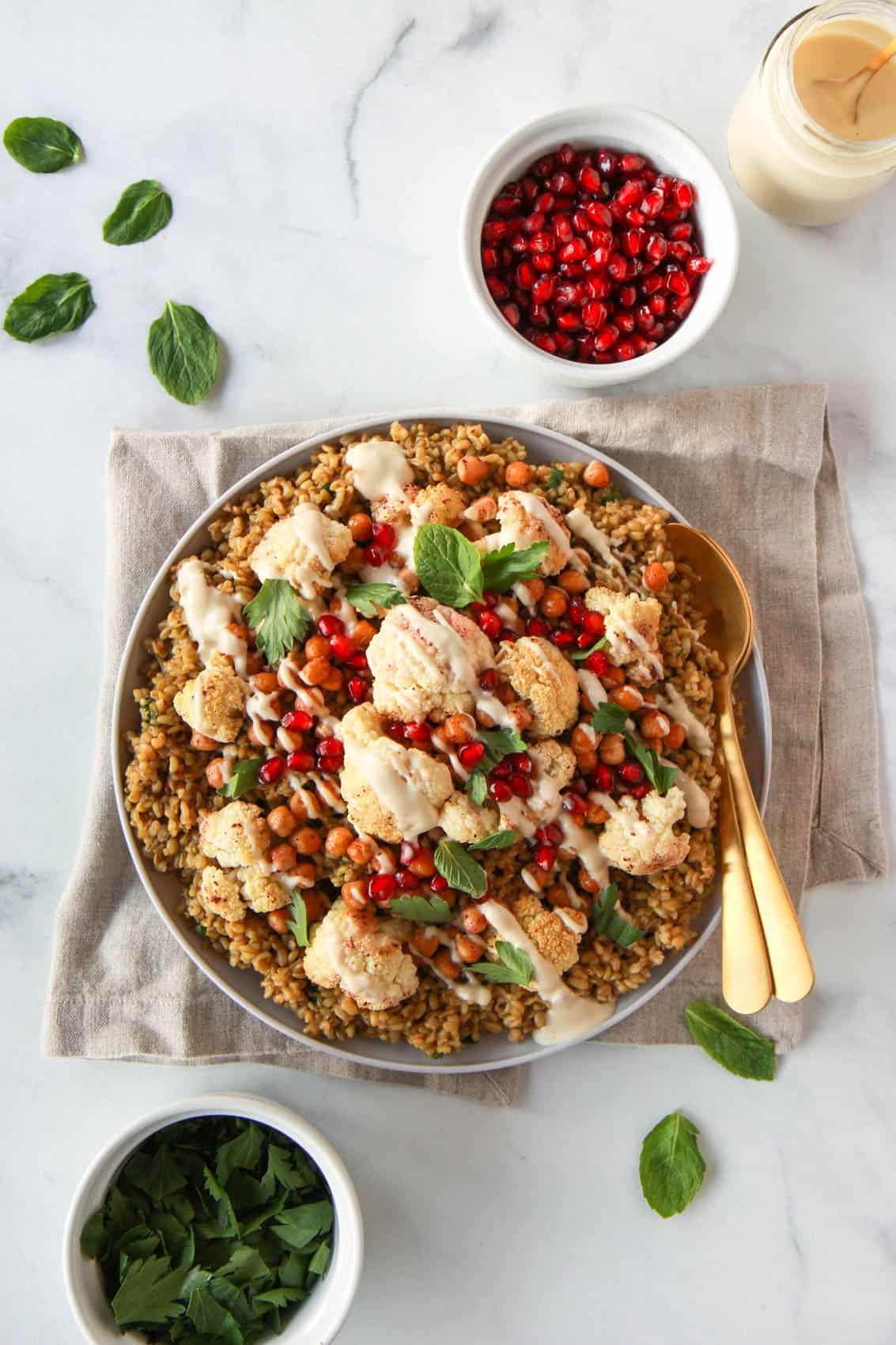
While freekeh is traditionally made with roasted meats, this cauliflower and chickpea version might be even better! This vegan freekeh recipe is just as flavorful and filling as the traditional version, without the need for meat.
Like my Syrian mujadara with bulgur and lentils or my zucchini and bulgur pilaf, this Middle Eastern recipe uses a hearty ancient grain to create a satisfying, plant-based main course. Whether you already love freekeh or are trying it for the first time, this cauliflower freekeh dish will make you fall in love with the ancient grain in a whole new way.
Jump to:
What is freekeh?
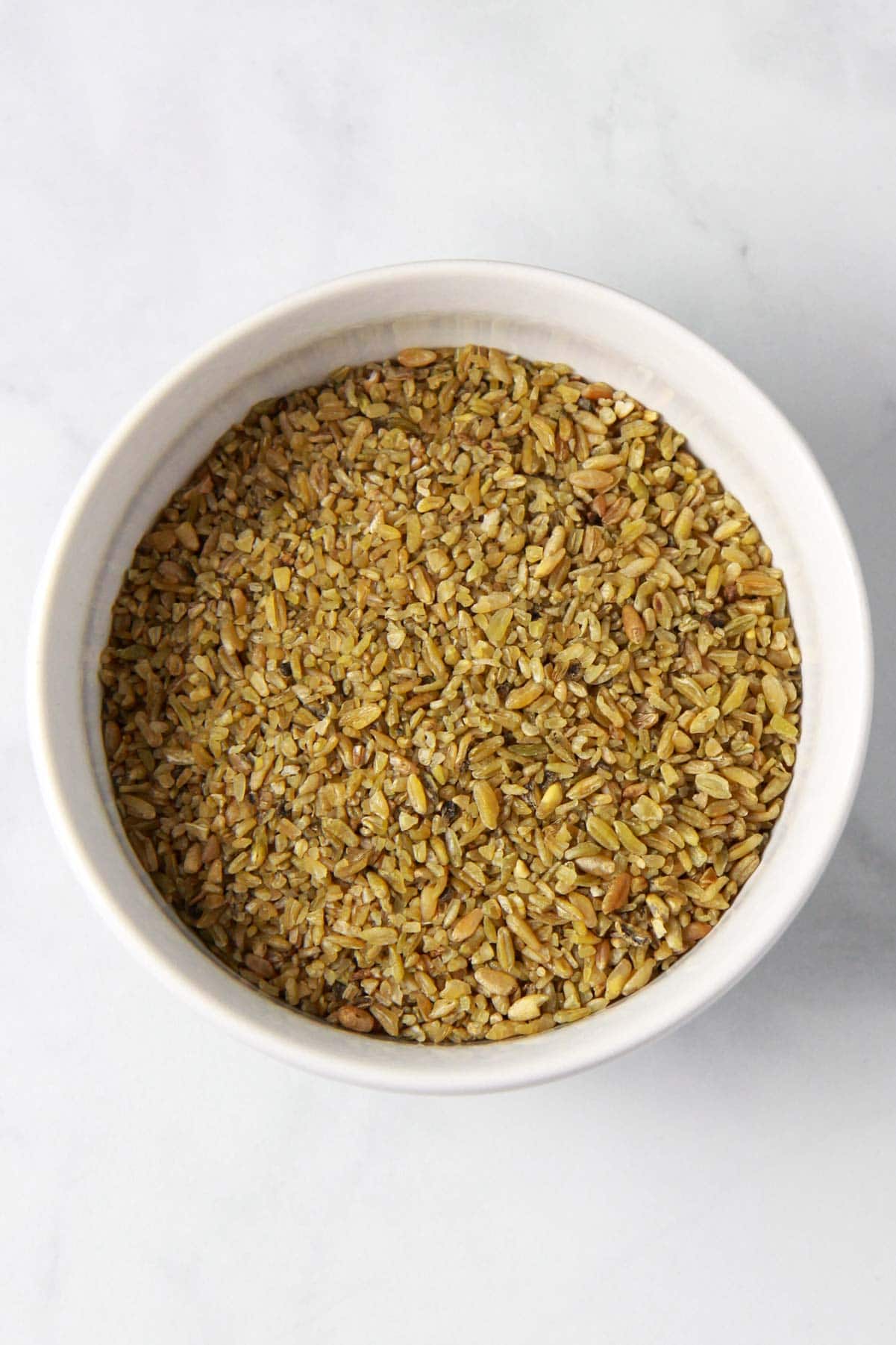
Freekeh is an ancient grain that’s recently gained more popularity, although it was discovered around 2300 B.C.! It’s made from young, green wheat that’s harvested early and roasted. The result is a smoky, nutty flavor with a chewy, tender texture. It’s a nutrient-dense whole grain that makes a great base for a variety of dishes.
Where is freekeh from?
Freekeh originated in Levantine and North African cuisine thousands of years ago. It’s a staple in Syrian, Palestinian, and Lebanese kitchens and the star of many Middle Eastern gatherings. Traditionally, freekeh is often paired with lamb or chicken, but it makes a hearty base for vegan and vegetarian dishes as well.
Freekeh nutrition
Freekeh isn’t just a delicious grain; it’s also packed with nutrition! It has almost twice as much fiber and more protein per serving than quinoa does, meaning it will keep you feeling satisfied for longer.
It’s also rich in antioxidants, iron, and calcium, and low on the glycemic index, making it a great choice for those managing blood sugar levels. ust keep in mind that since it’s a form of wheat, it’s not gluten-free. For those without gluten sensitivities, it’s a fantastic alternative to other grains.
Ingredient notes
The main ingredients each play an important role in making this a flavorful and satisfying dish.
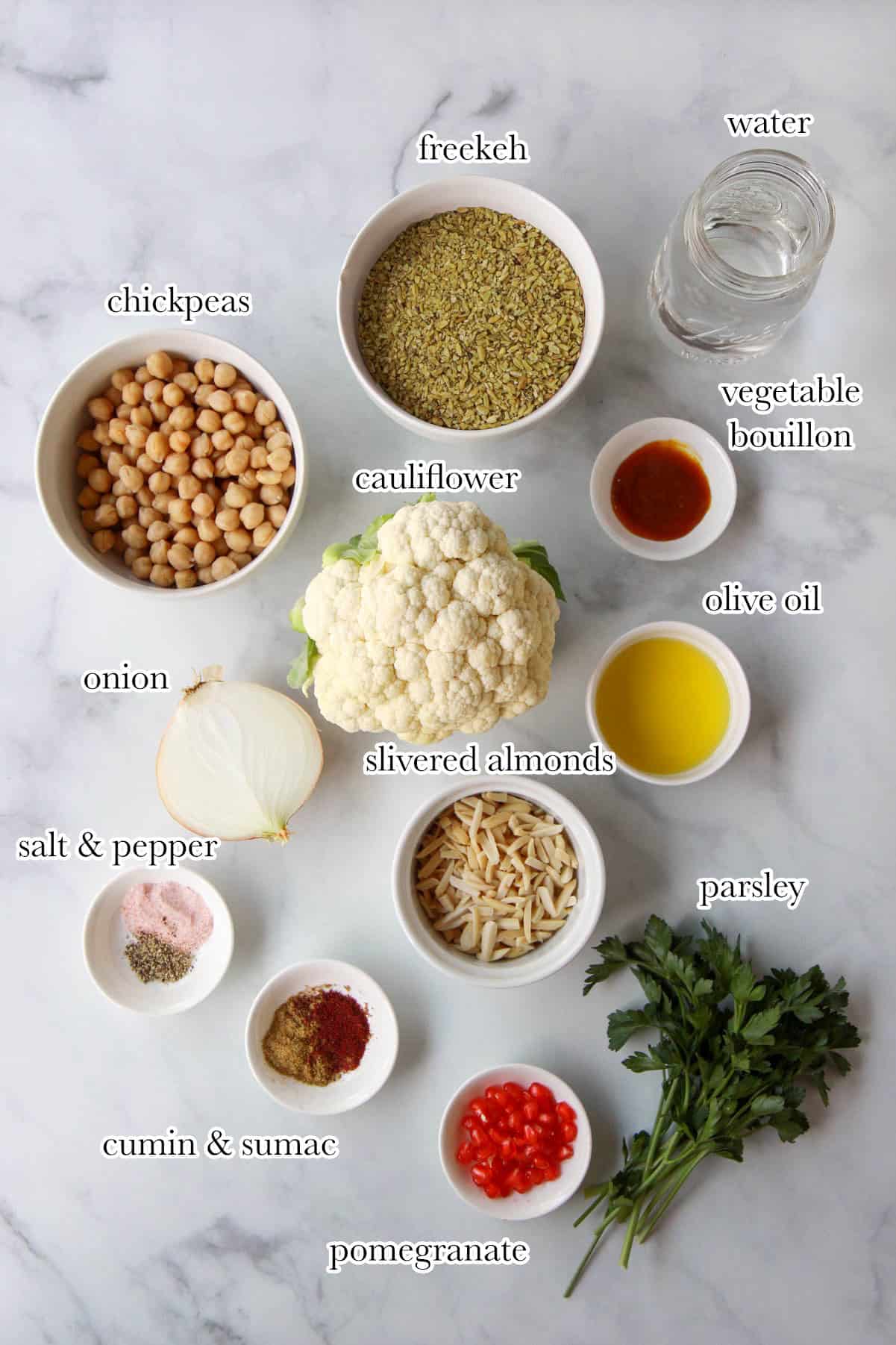
Freekeh
You can find freekeh at Middle Eastern markets, online, or even at some local supermarkets. For this recipe, I use cracked green freekeh, which cooks faster and has a softer texture than whole freekeh. I love to get Ziyad’s Palestinian freekeh when ordering online.
Cracked vs. whole freekeh
Whole freekeh takes longer to cook and has a chewier bite. Cracked freekeh, on the other hand, cooks more quickly and results in a softer texture, making it ideal for this dish.
Cauliflower and chickpeas
Instead of meat, I use cauliflower and chickpeas to make this a vegan freekeh recipe. Cauliflower makes a wonderful replacement for chicken and chickpeas add more protein and crunch. Tossed with cumin and sumac, these roasted veggies become so flavorful.
Almonds
I top this dish with slivered almonds, but you can use another kind of nut like cashews or pine nuts. Lightly toasting the nuts enhances the flavor of the dish.
Vegetable bouillon and onion
To replace the flavor typically added by meat in traditional freekeh dishes, I use vegetable bouillon and sautéed onions. The onions provide a sweet, savory base while the bouillon adds richness to the freekeh as it cooks. If you don’t want to use bouillon, you can instead replace the water with vegetable broth.
Olive oil
Extra virgin olive oil is a key ingredient in this recipe, as it enhances the flavor of both the freekeh and the roasted vegetables. It’s a must-have for any Middle Eastern dish, and its rich, fruity flavor elevates this one to the next level.
For ingredient quantities, see the recipe card below.
How to cook freekeh
This dish is simple to prepare by multitasking. While simmering the freekeh on the stovetop, you’ll be roasting the veggies in savory spices in the oven. Here are the key steps to follow carefully.
Clean the freekeh
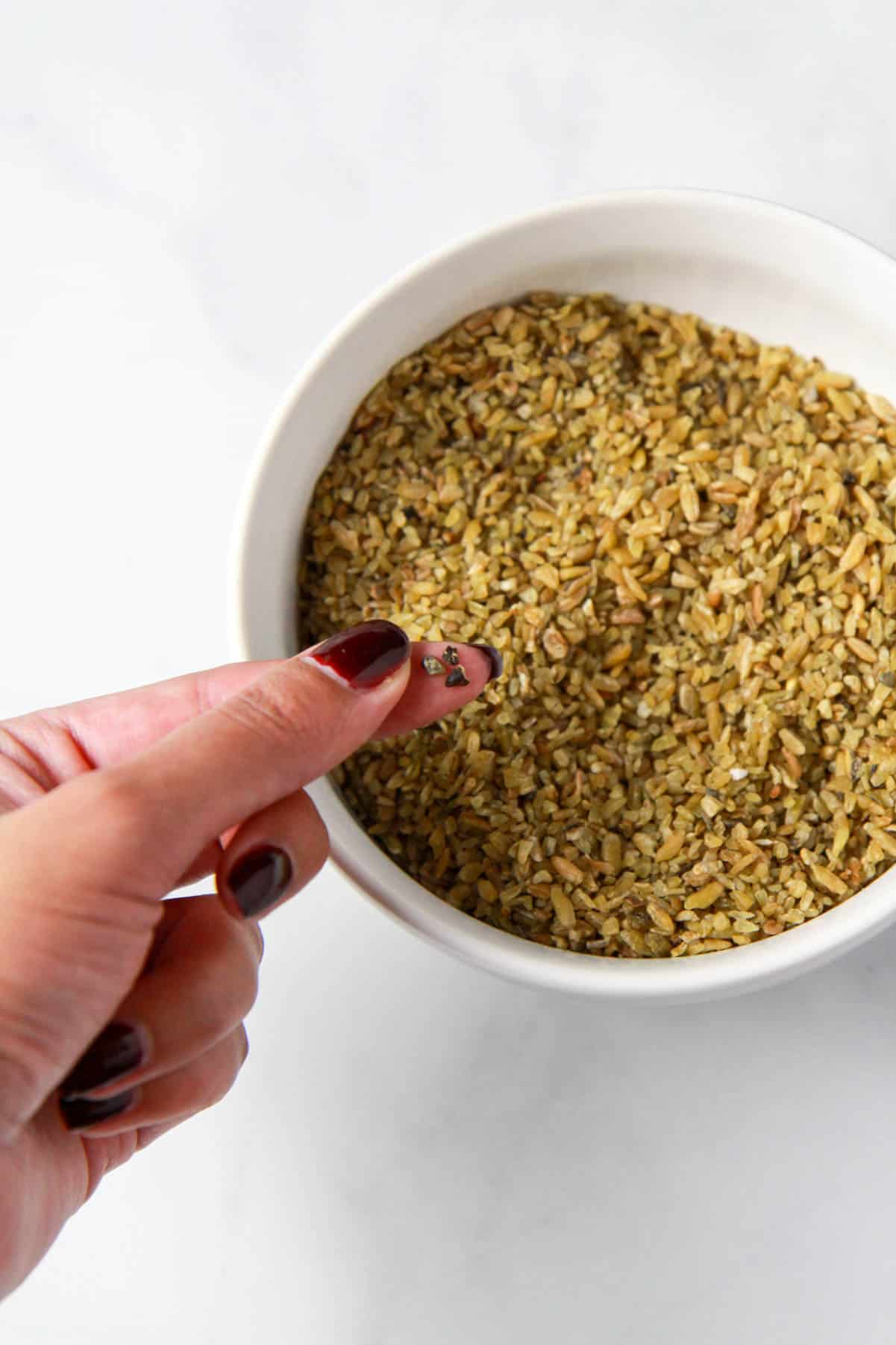
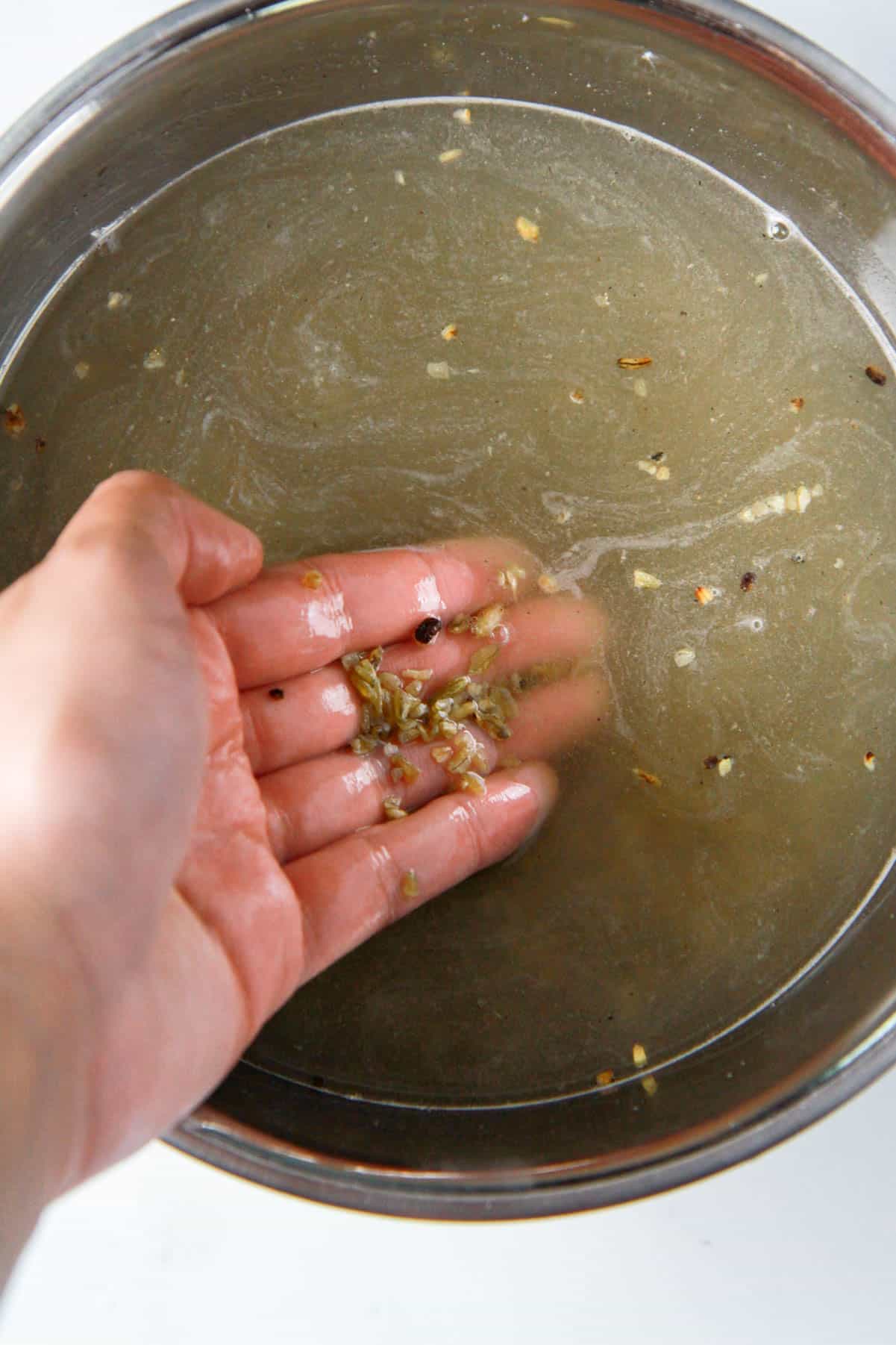
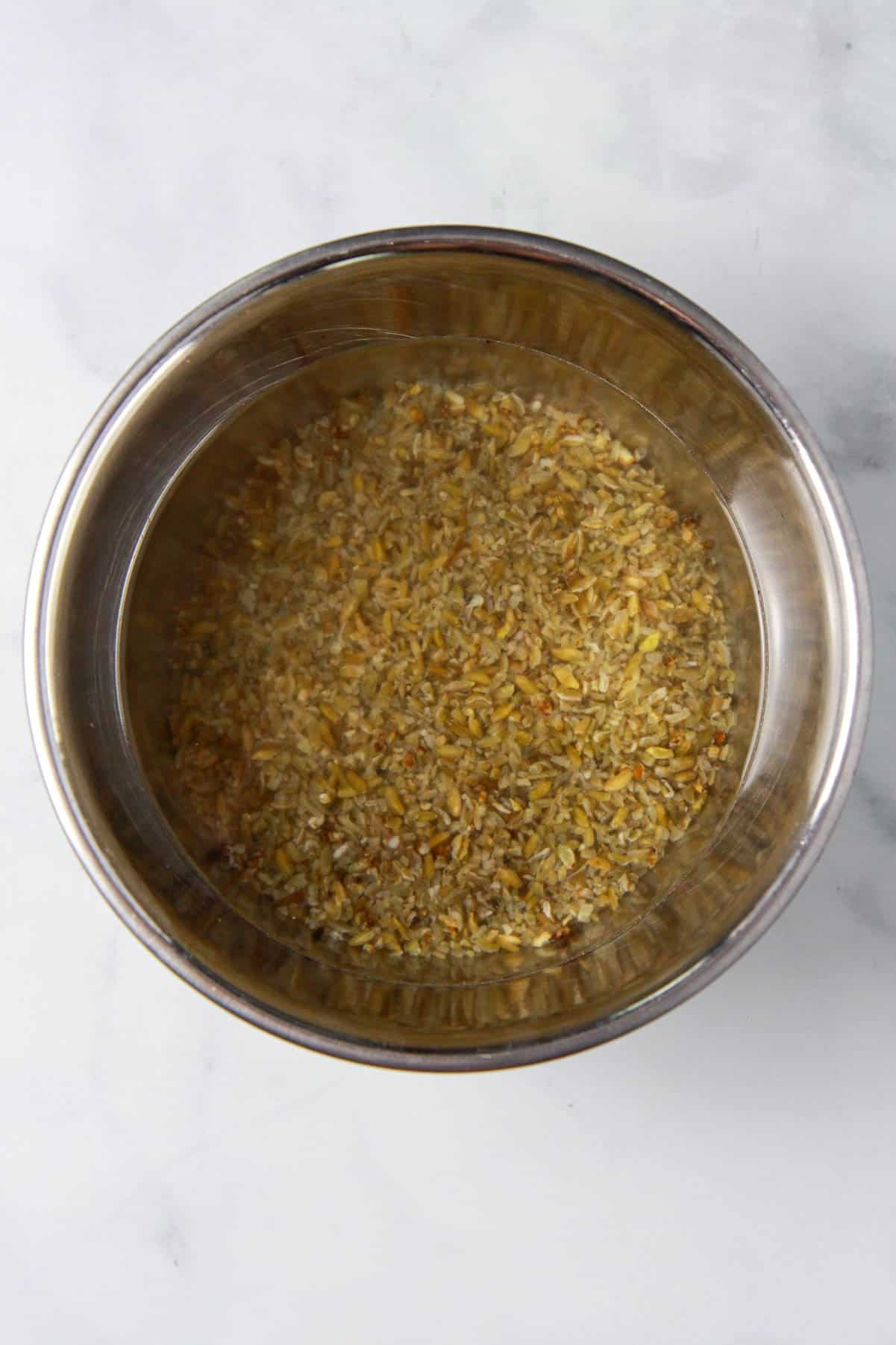
It’s important to clean your freekeh before cooking. Start by sifting through the freekeh to remove any small stones or debris. To make it easier, you can spread out the freekeh on a large tray to see what needs to be picked out.
After picking out any unwanted bits, rinse thoroughly until the water runs clear, discarding any parts that float. If you want to speed up the cooking process, you can soak the cleaned freekeh for 30 minutes before cooking.
Cook the freekeh
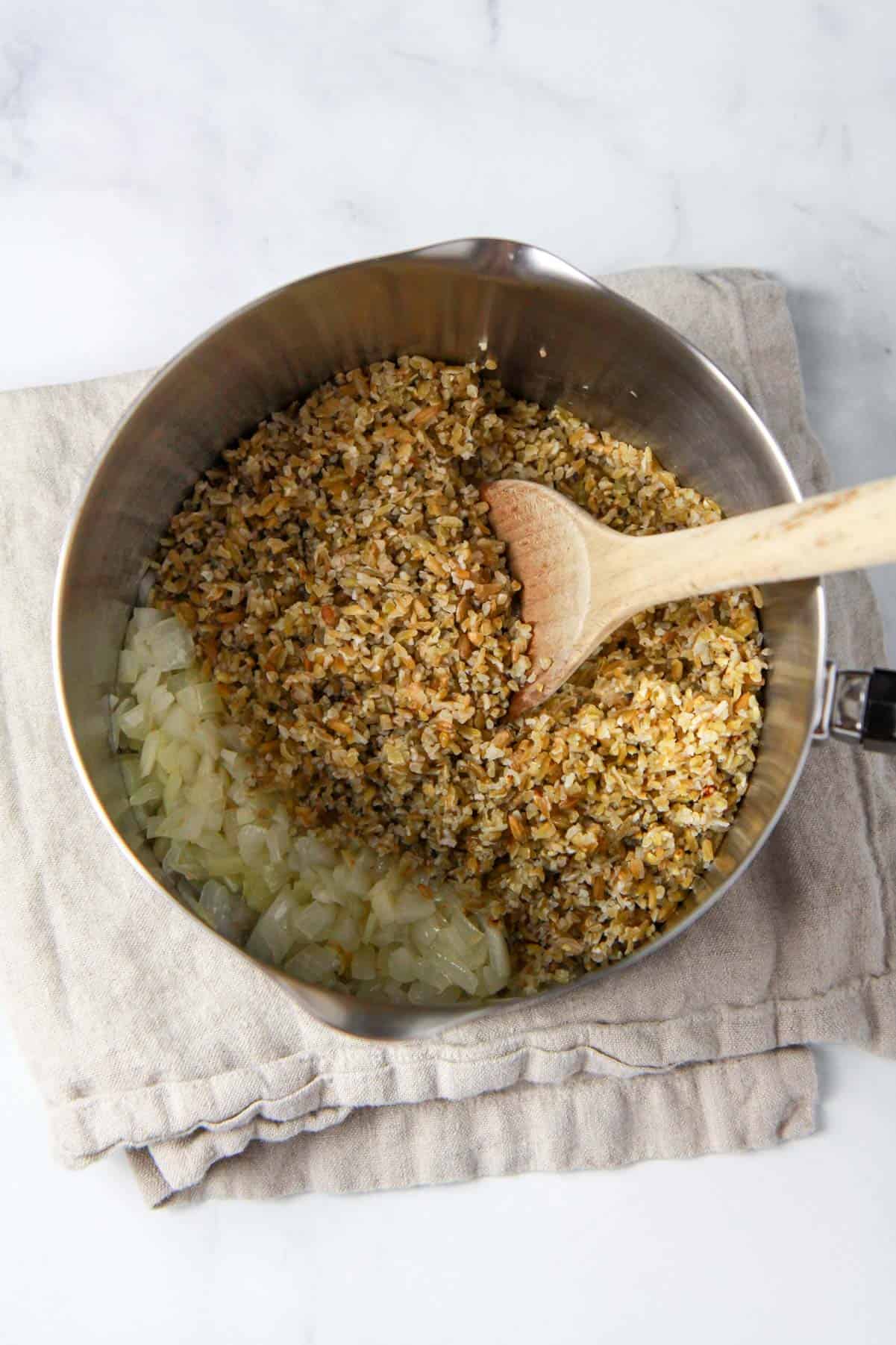
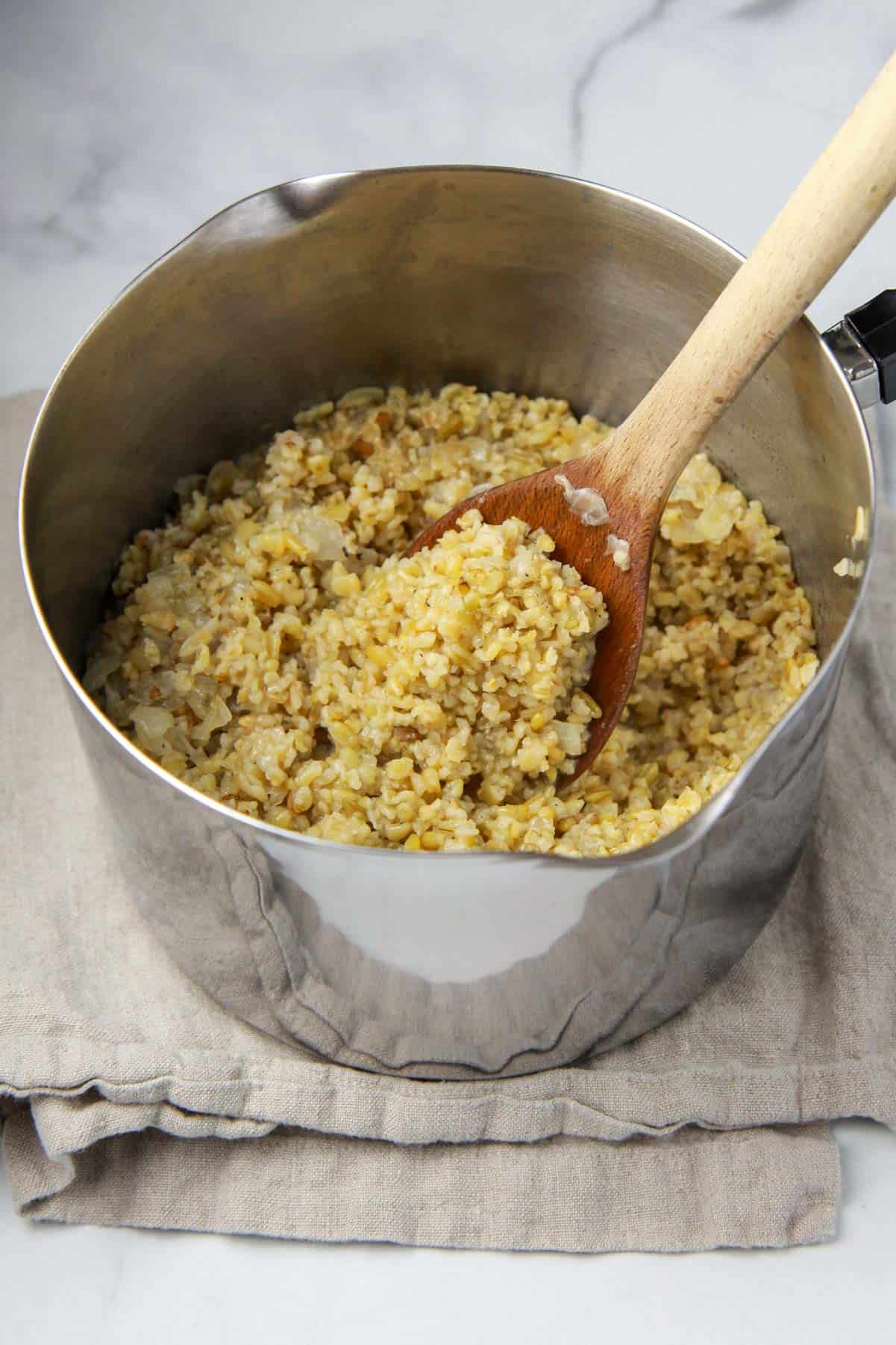
Start by sautéing the onions in olive oil for a rich, flavorful base. Add the rinsed freekeh and toast it to bring out its nutty flavor. Stir your vegetable bouillon into the water. Add the water to the freekeh and season with salt and pepper.
Bring everything to a boil, then reduce the heat and let it simmer until the liquid is absorbed. You will know when the freekeh is done when all the liquid has evaporated and the freekeh is tender but still slightly chewy.
Roast the veggies
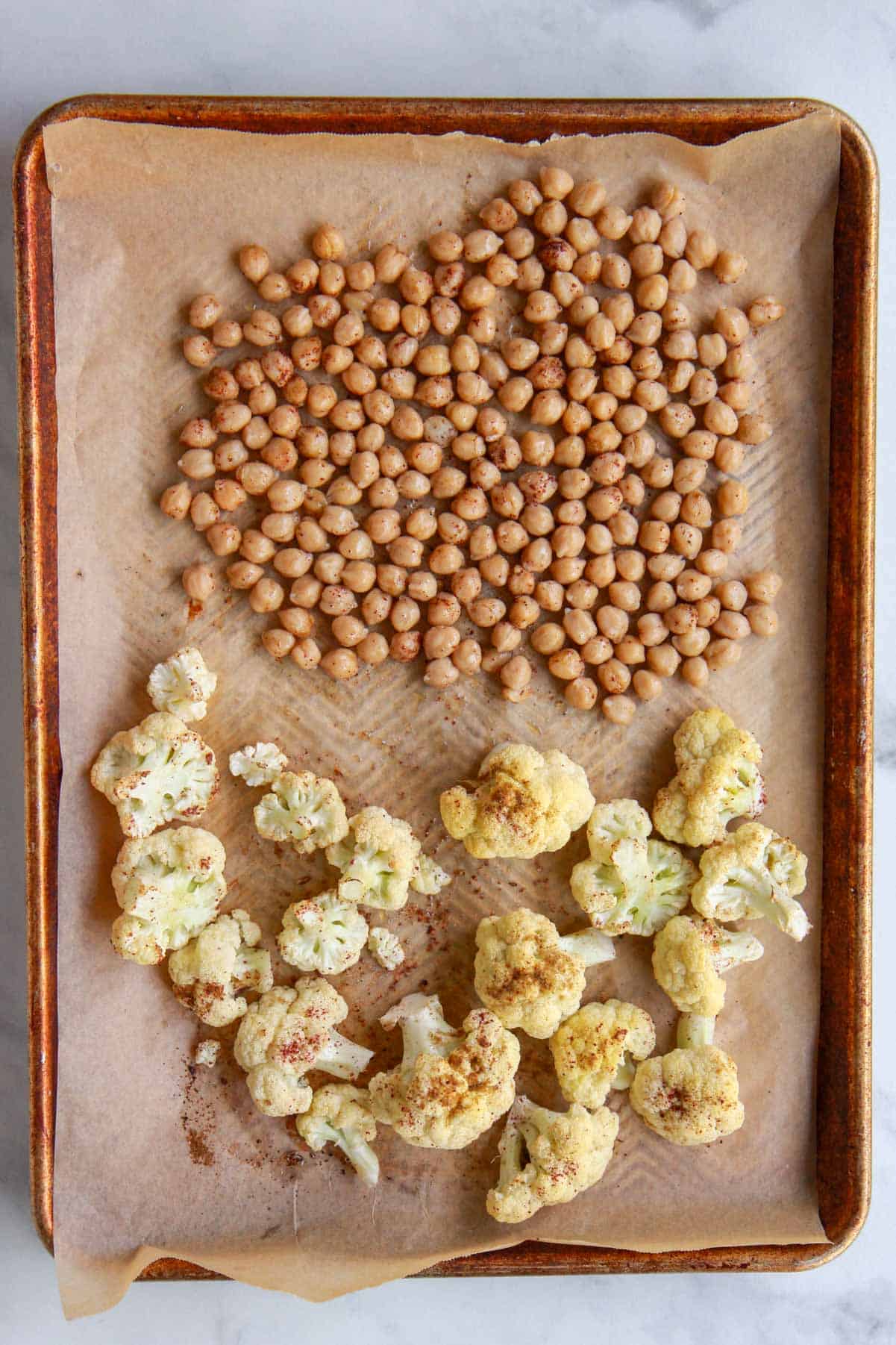
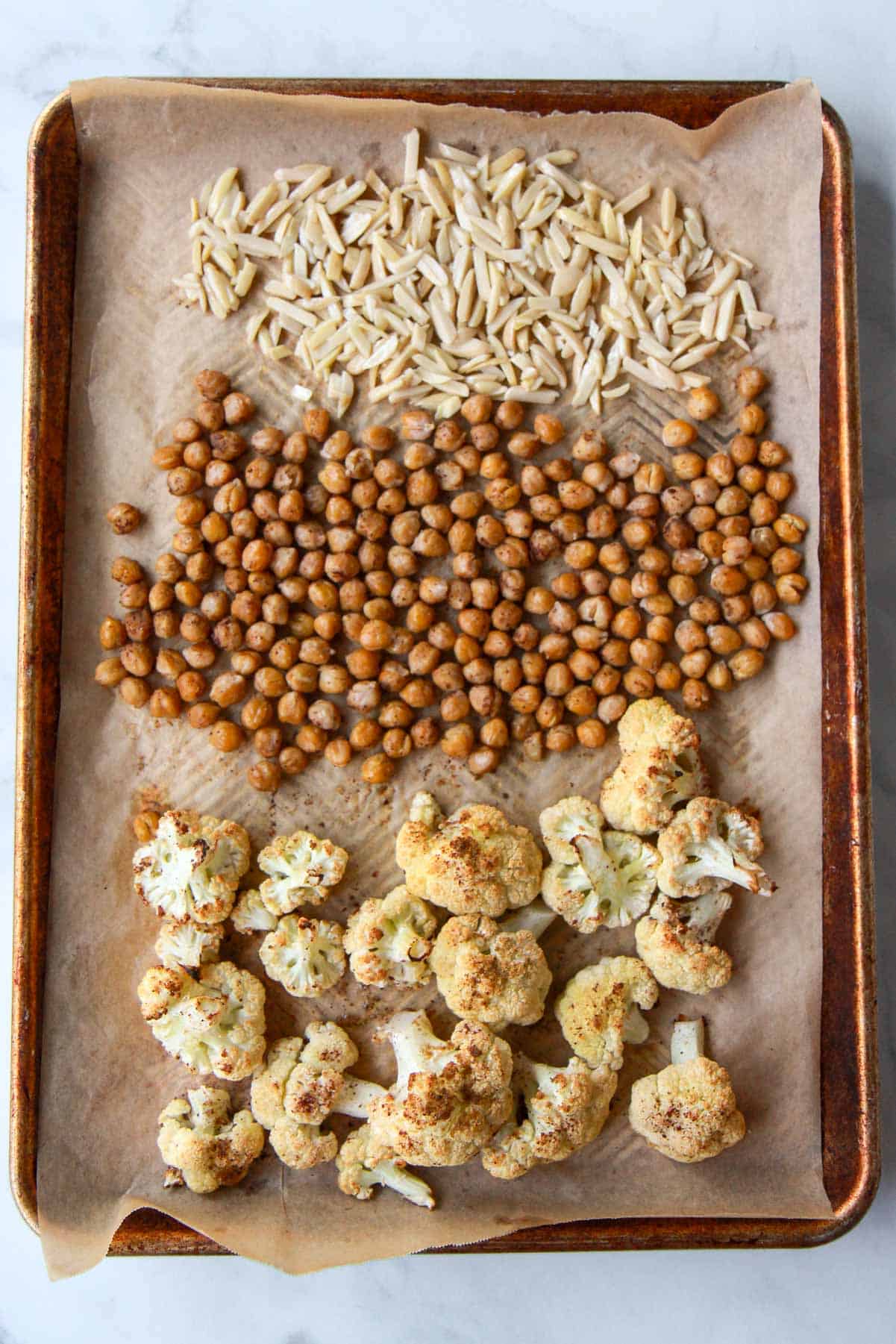
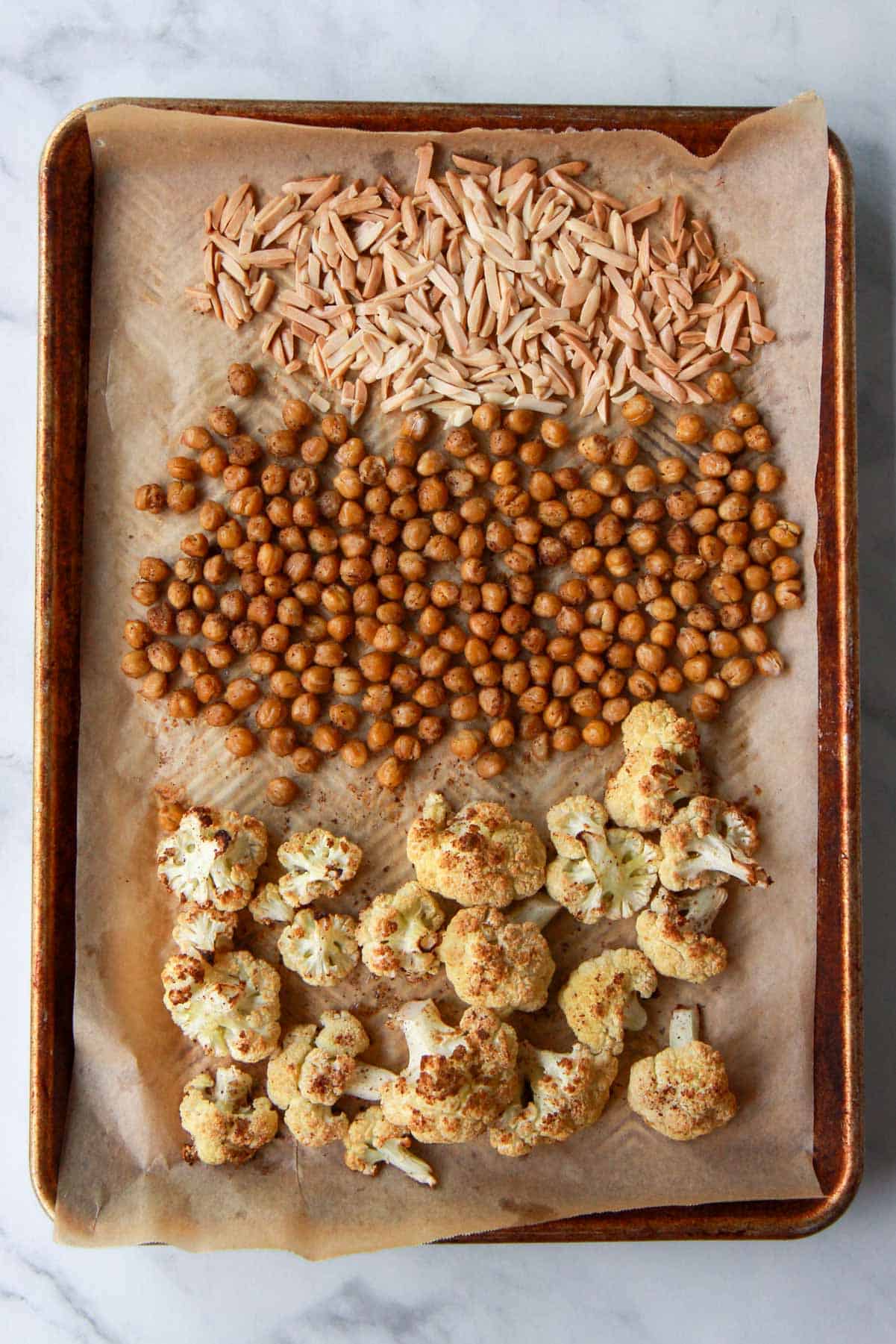
While the freekeh cooks, roast the cauliflower and chickpeas in the oven. Toss them with olive oil, cumin, sumac, and a sprinkle of salt. Roast until the cauliflower is browned and the chickpeas are crispy. The almonds can be added during the last few minutes of roasting to make sure they get perfectly golden without burning.
Assemble the final dish by topping the cooked freekeh with the roasted veggies and nuts. Top with fresh parsley and pomegranate seeds if you like, and serve with lemon tahini sauce or non-dairy yogurt on the side.
Substitutions & variations
- Veggies: Hearty vegetables like roasted butternut squash or carrot would make a great addition or substitution for cauliflower to top this vegetarian freekeh recipe.
- Nuts: you can try other nuts like roasted cashews or whole almonds. Pistachios can also be a great option, adding a pop of color and a distinct flavor to the dish. Pine nuts also work great.
Expert tips for making this recipe
- Don’t skip cleaning the freekeh. Freekeh often contains small stones or debris, so it’s essential to sift through it carefully.
- Soak the freekeh for quicker cooking. If you’re short on time, soaking the freekeh for about 30 minutes before cooking can help it cook more quickly and evenly.
- Keep an eye on your veggies. Set timers to make sure your cauliflower and chickpeas don’t overcook while you’re preparing the freekeh. The cauliflower should be golden brown and the chickpeas crispy for the perfect texture.
FAQs
For every 1 cup of freekeh, use 2.5 cups of water or broth to achieve a perfectly cooked, fluffy grain.
Cracked freekeh takes 20-40 minutes to cook, while whole freekeh may take longer. Soaking the freekeh for half an hour beforehand can reduce the cooking time.
While it’s not necessary to soak freekeh, soaking it for 30 minutes can reduce cooking time and ensure an even texture.
Yes! Freekeh has a slightly chewy texture when cooked properly, which is one of the reasons it’s so loved.
What to serve with this recipe
I love serving this cauliflower freekeh with a refreshing side salad to balance the hearty grains. Some of my favorite options are a Palestinian salad, a refreshing Mediterranean chopped salad with cucumbers and tomatoes, or my tomato and red onion salad with za’atar. Tomatoes add a cooling and refreshing contrast to the freekeh dish.
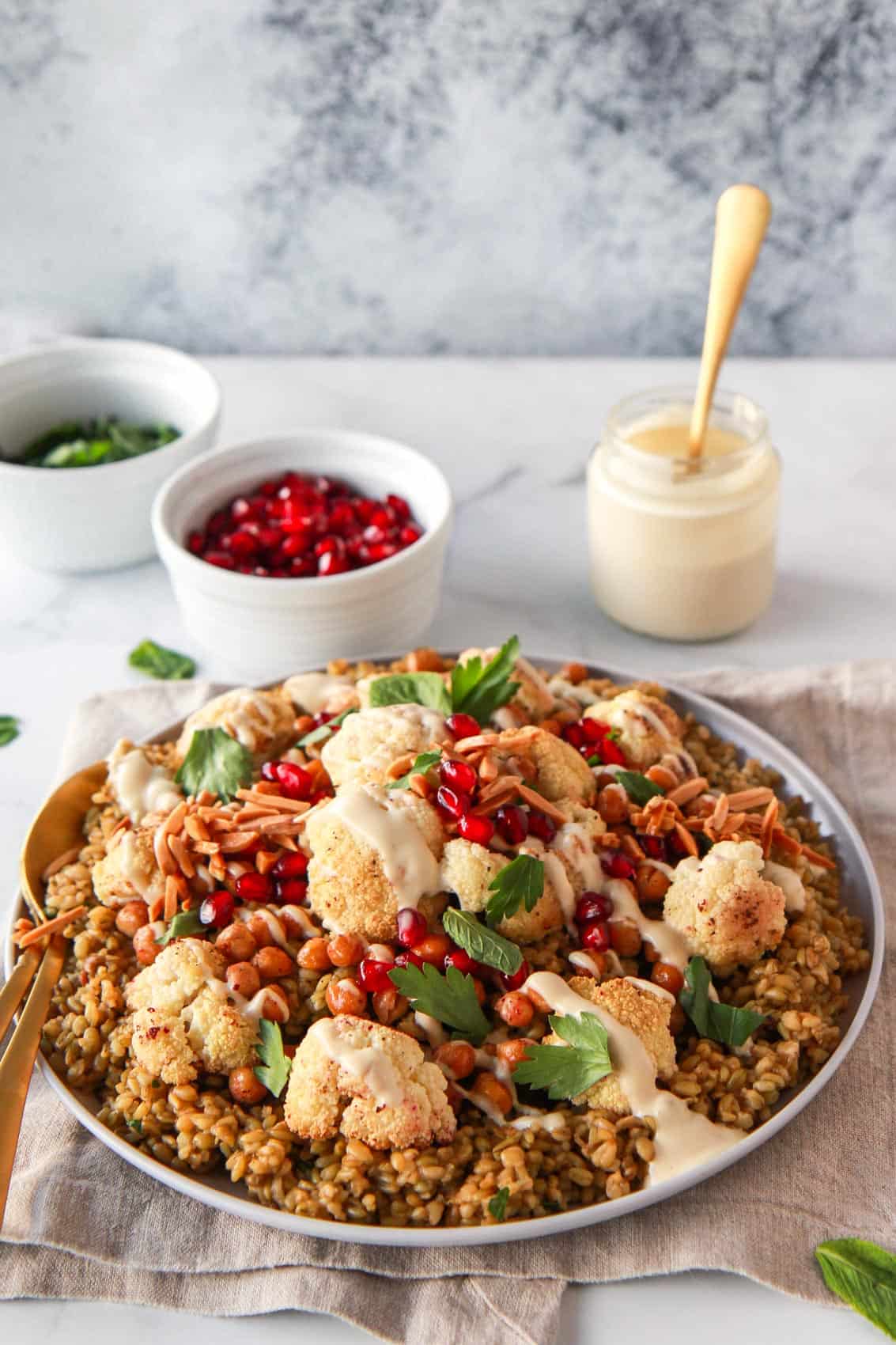
Tried this recipe?
If you made this Middle Eastern freekeh recipe, I’d love to hear from you! Don’t forget to leave a ⭐️ star rating and review below.
Pin it for later or share your recreations with me on Instagram @zenandzaatar! 🥰 I can’t wait to see how you serve it!
Recipe
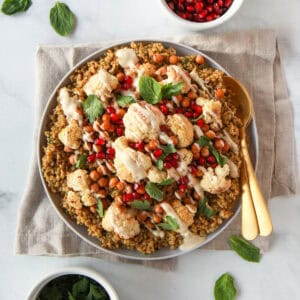
Simple Middle Eastern Freekeh with Cauliflower and Chickpeas
Ingredients
Freekeh
- ½ onion diced
- 1 ½ tablespoon olive oil
- 1 ½ cups freekeh (cracked green freekeh preferred)
- 1 tablespoon vegetable bouillon
- 3 ¾ cups water
- ½ teaspoon salt
- ¼ teaspoon black pepper
Toppings
- 1 large head cauliflower or 2 small heads of cauliflower (about 2 lbs whole cauliflower or 1 lb cauliflower florets)
- 1 15 oz. can chickpeas
- ½ cup slivered almonds or other nuts
- 2 ½ tablespoon olive oil divided
- ½ teaspoon salt divided
- 1 teaspoon sumac divided
- 1 teaspoon cumin divided
- Parsley leaves chopped, for topping
- Pomegranate seeds for topping (optional)
- Creamy tahini sauce or non-dairy yogurt for serving
Instructions
- Preheat your oven to 425°F.
- Wash and rinse freekeh thoroughly, removing any debris. In a pot over medium high heat, sauté the onions in olive oil. After about 7 mins, once the onions are translucent and begin to brown, add the washed freekeh. Toast until nutty, about 5 more mins.
- Dissolve some veg bouillon in 1 cup of the water. Add it to the pot of freekeh along with the rest of the water, salt, and pepper, and bring to a boil. Lower to a simmer and cover until cooked and liquid has evaporated, about 20-40 mins, depending on your freekeh.
- Meanwhile, prepare roasted veggies. Toss cauliflower with ½ teaspoon cumin, ½ teaspoon sumac, ¼ teaspoon salt, and 1 tablespoon olive oil. Roast for 12 mins.
- Rinse and drain canned chickpeas. Toss chickpeas with ½ teaspoon cumin, ½ teaspoon sumac, ¼ teaspoon salt, and ½ tablespoon olive oil, and add them to the baking sheet. Roast for 15-20 more mins, until veggies are browned and tender.
- In the last 7-8 mins of roasting, toss slivered almonds with 1 tablespoon olive oil and add them to a portion of the baking sheet or a new baking sheet. Once the almonds are browned, remove everything from the oven and set aside.
- Serve cooked freekeh topped with roasted veggies. Top the dish with roasted almonds, parsley, and pomegranate seeds, if desired.Serve with creamy tahini sauce or yogurt. Enjoy!
Notes
Nutrition

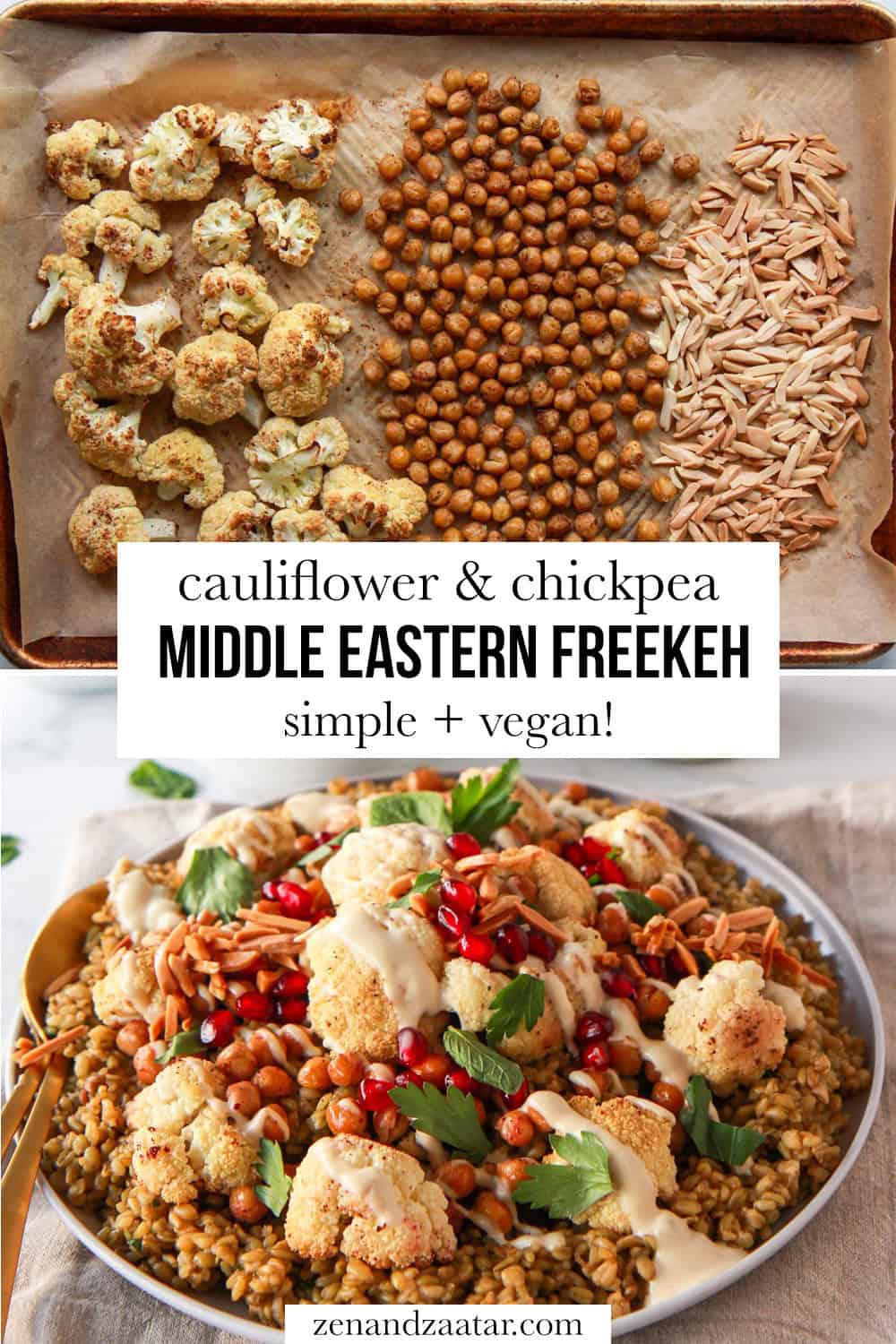
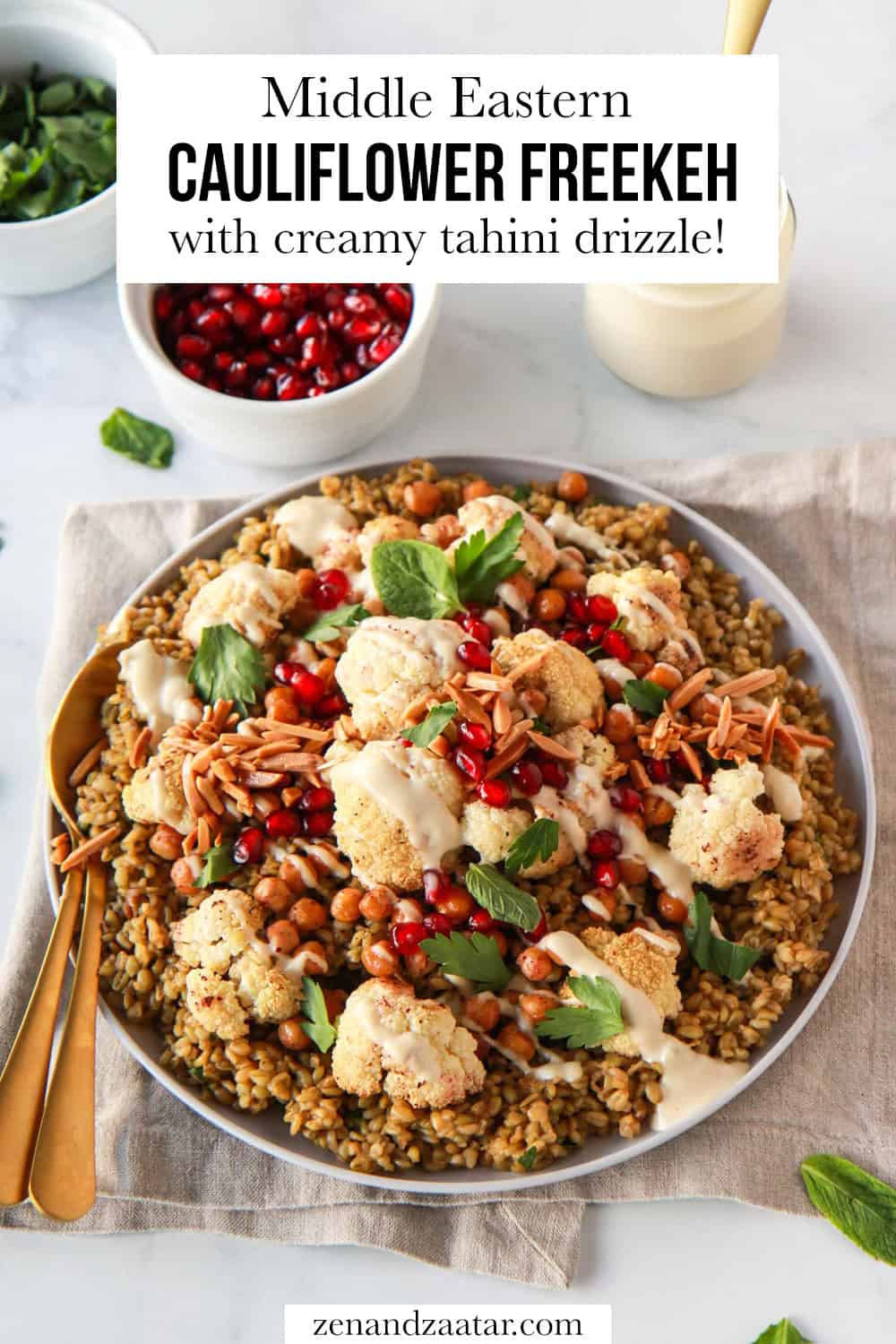
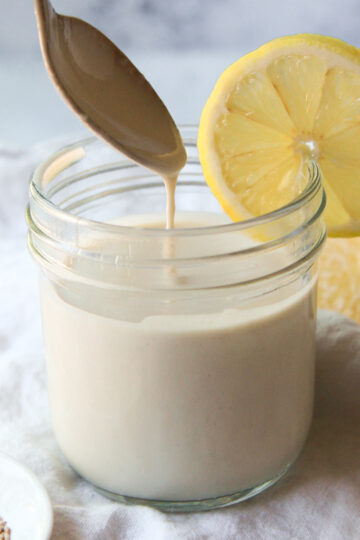
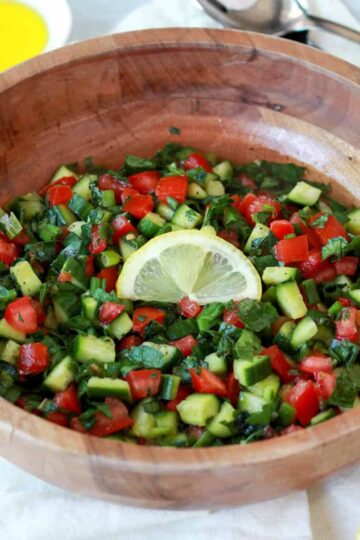
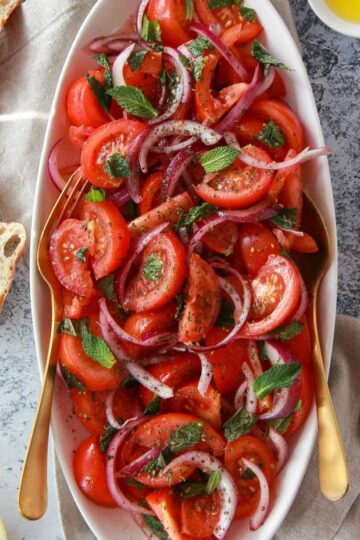
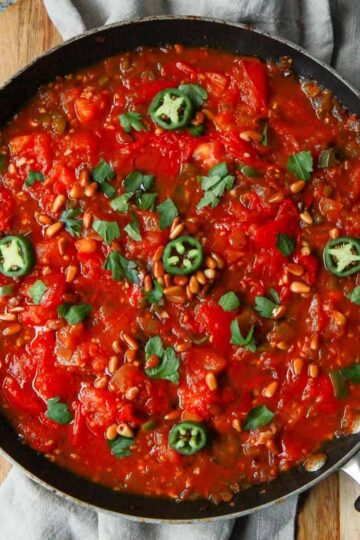
Lynne Hurcum says
How much water please? Says; Dissolve some veg bouillon in 1 cup of the water. Add it to the pot of freekeh along with the rest of the water,
Cannot find the water amount.
Looking forward to making this
Zena | Zen and Zaatar says
So sorry about that- the amount is 3 3/4 cups of water! I hope you love this recipe, please let me know what you think! 🙂